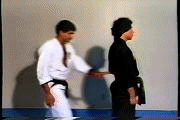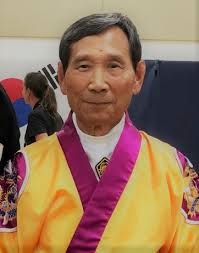Kuk Sul Hapkido Martial Arts
BE KIND, BE THRIFTY, BE HUMBLE

Kuk Sool Won KUK SOOL WON "Korean Traditional Martial Arts Association" created in 1966.
Kuk Sool Won blends karate kicking and hand techniques with judo-like throws, and locks and bars like
those in jujutsu. Kuk Sool Won practitioners have faith in the superiority of their art, because of
its many defensive options that does not need more power than an average woman or an elderly man
can possess. Furthermore, determined students learn the healing arts., the grandmaster of Kuk Soo
l Won, established the world headquarters in San Francisco. After confirming the honorable character of students, In Hyuk Su teaches them number of simple, but valuable techniques. Higher students learn as many as 3,608 techniques, which are divided into 270 sections, which in turn are derived in Hyuk Su from three traditions. Sado Mu Soo (tribal martial arts) Sado Mu Sool allegedly invented during the end of the stone age in Korea, about 2000 B.C. Clearly, the most important weapons were the stone knife, the stone spear, and the stone axe. During this aera, Korean clans living in northern Korea and southern Manchuria, unified into the Puyo alliance. During spring and autumn ceremonies, martial arts competitions between tribes took place In A.D.987, King Sung Jong banned the use of weapons by the ordinary citizenry. There was renewed appeal in unarmed fighting, and Sado Mu Sool enjoyed a revival in popularity. When the Japanese invaded Korea in 1592,they met strong resistance from tribal groups skilled in this art. Buldo Mu Sool has a history like those styles of kung-fu that grew out of the Shao-lin temples in China. Buddhist monks had to have good health to practice their long, intense meditation sessions, and they had to be able to defend themselves when traveling. Some monks were skilled in the martial arts when they joined the monasteries but were taught after they joined. Koong Joong Mu sool had its roots in the military training given officers and soldiers in the armies of the three war-torn Korean kingdoms founded in the first century: Silla (57 B.C),Koguryo (37 B.C.), Paikje (17 B.C.). Warfare inspired the review and development of Koong Joong Mu Sool, which included education in armed and unarmed tactics. In 1790 King Jung Jo ordered martial arts instructor Lee Duk Moo to compose an introduction to Korean martial arts techniques. The first three books were about weapons fighting. A fourth book was about unarmed combat: he illustrated vital pressure points and warned that nobody should be taught these techniques unless he could be trusted. In 1910 the Japanese occupied Korea. When they put an end to the Korean Royal Court Army, the master instructor, Myung Deuk Suh, went to his hometown in Kyung Sang province to preserve what he had learned of Koong Joong Mu Sool. His grandson, In Hyuk Su,began the study of Korean martial arts when he was six. Kuk Sool Won has expanded throughout Korea in an estimated 153schools, each presided over by an authorized master trained by In Hyuk Su. Kuk Sool Won uniforms patterned after the customary dress of Korean military generals. The twin dragon emblem worn by the grandmaster is a recognized symbol of the heavenly mandate, or legitimacy of the knight power. Its colors -- gold, green, and lavender -- are representational of the royal family. When Japanese annexed Korea, they eliminated the Korean Royal Court Army, so master Suh came down to his hometown in Kyung Sang province. While compiling Kuk Sool techniques, he taught this art to his grandson, In-hyuk Suh. Before the old master passed away in 1952, he handed down five composed books of Kuk Sool to the young master Suh. They are (1) Yu Sool(2)Kwon Sool (3) Yu Kwon Sool (4) Whal Bub (5) Hyul Bob After his grandfather passed away, the young master sought other characteristics of Korean Traditional Martial Arts for the next eight years from several other masters. These are the names of some of the masters he trained under: 1. Master Ypng-sool Choi: In Hyuk Su visited several private martial arts schools and villages to study Tribal Martial Arts or private martial arts. One of the significant in this area is master Young-sool Choi. From master Choi, he received further instruction in Yu Sool. 2. Hai Dong Seu Nim (the Great Monk of the East Sea): To learn Buddhist Martial Arts, In Hyuk Su visited many temples throughout the country. One of his eminent instructors was Hai Dong Seu Ni,. He studied Kwon Sool, Ki Bub (Ki exercise) and Breathing techniques. 3 .Master Tai-eui Wang: In Hyuk Su also visited old master of Royal Court Martial Arts. One of his teachers of this art was master Tai-eui Wang. From master Wang , he learned Yu Kwon Sool In 1975 the World Kuk Sool Won Association was established to promote Korean traditional martial arts throughout the world. Grandmaster In-hyuk Suh was appointed as president and Dr, He-Young Kim as Secretary-General of the Association. |
